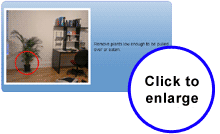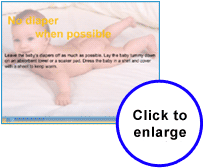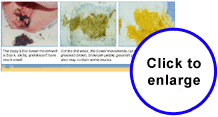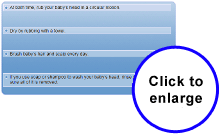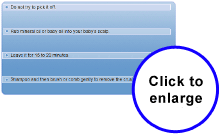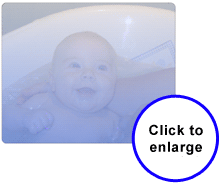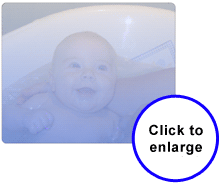MODULE 8
Healthy Family
a. Childproofing
A way to keep your baby safe is to childproof your home. Newborns are not going to be crawling around the floor putting things in their mouth for a while, but it is wise to prepare for when this happens.
Check the floors, shelves, and cupboards. Remove anything small enough to be swallowed or poked into ears or nose. Put away anything that has edges sharp or rough enough to cut or scrape your baby.
The following exercise will help you childproof your home.
C. BABY SAFETY
Making your baby's world as safe as possible is part of being a parent.
Watch your baby so that he or she does not get hurt. Never leave an infant alone - not even for one second - except in a safe crib.
All the items your baby uses must be safe and well made. These items are: strollers, high chairs, clothing, toys and pacifiers.
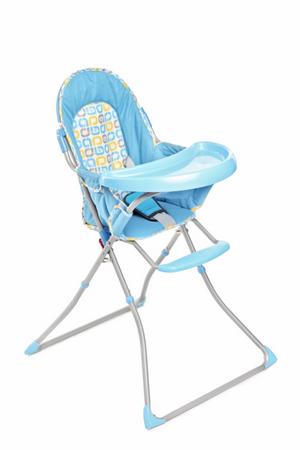 |
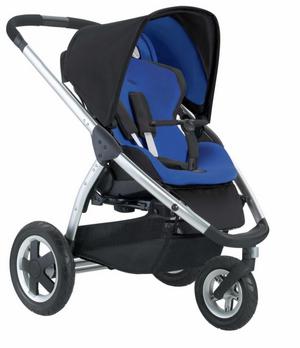 |
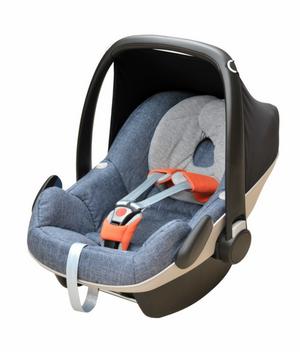 |
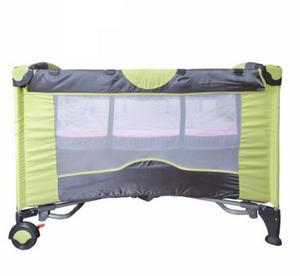 |
Consult Health Canada, Transport Canada, St-John Ambulance, Canadian Pediatric Society or for more information about child safety.
m. Check Ups and Immunization
Babies should be seen within the first 2 days if you leave the hospital within 48 hours after birth. If you stay more than 48hrs in the hospital after birth, your baby should be seen in the first week. Your health care provider will let you know how often your baby needs to be seen. During checkups, babies are weighed and measured. Their development is also checked.
Immunizations are also part of regular health care. To view the schedule of your baby's immunizations please visit the following website:
http://www2.gnb.ca/content/dam/gnb/Departments/h-s/pdf/en/CDC/Immunizati...
In addition to the immunizations they receive as babies, children need booster shots between the age of four and six, before starting school. Talk with your health care provider or public health nurse for more information about checkups and immunizations.
l. Number of Wet Diapers
Baby's wet themselves between six to ten times a day (see bowel movement section). Changing your baby's diaper as soon as it is wet will help prevent diaper rash.
If your baby has fewer than six heavy wet diapers a day or if the urine is dark yellow and has a strong smell, it may mean that your baby needs more fluid. You should contact your health care provider if you baby does not have 6 heavy wet diapers a day.
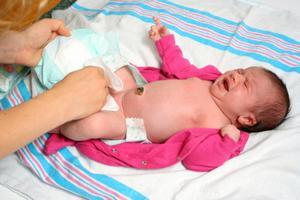
k. Diaper Rash
Diaper rash is very common. It can range from a few red spots that are not serious to blisters and sores in more serious cases.
Diaper rash can be caused by a number of things.
To avoid diaper rash, change the baby's diaper often. Use a clean cloth to wash and dry the baby's bottom.
This is what to do if your baby gets a diaper rash.
j. Bowel Movements
A baby's bowel movements change colour and texture over time. Bowel movements are different for breastfed and formula fed babies.
It is normal for babies to grunt and get red in the face when having a bowel movement.
In the first few weeks it is important to monitor the number of bowel movements your baby has to ensure they are getting enough milk. After the first few weeks, your baby may not have a bowel movement every day. This does not mean your baby is constipated. Babies are constipated when their bowel movements are hard and dry. If this happens, call your health care provider, public health nurse, or any health professional. A breastfed baby is rarely constipated because breastmilk contains enough water to keep the bowel movements soft.
When a baby's milk or food is changed, their bowel movements will generally change as well.
In the first few weeks, a well fed baby:
- at 1 day old has at least 1 wet diaper and at least 1 to 2 sticky dark green/black stools
- at 2 days old has at least 2 wet diapers and at least 1 to 2 sticky dark green/black stools.
- ** This is easier to notice urine in cloth diapers. A facial tissue can be placed inside disposable diapers, if you are not sure.
- at 3 days old has at least 3 heavy wet diapers and at least 3 brown/green/yellow stools. Occasional “red brick coloured” staining is normal until day 3.
- at four days old at least 4 heavy wet diapers and at least 3 brown/green/yellow stools.
- at 5 days and older, as the milk supply increases, baby has at least 6 heavy wet diapers and at least 3 large soft yellow seedy stools per day.
 |
Call your doctor if the baby's bowel movements are warety or have a strong smell. Your baby may have diarrhea. Diarrhea can make your baby very sick very quickly. |
Test Your Knowledge
The following exercise will help you learn a little more about the care of your baby's umbilical cord.
Click on the option button which corresponds to the correct answer and verify your answer by clicking on the "Check" button.
|
1 |
You can bathe your baby even though the umbilical cord has not fallen off. |
|
2 |
You must use alcohol to clean your baby's umbilical cord. |
|
3 |
It is important to keep the skin around the cord as clean and dry as possible. |
|
4 |
The area around the umbilical cord is sensitive for the baby. |
h. Cradle Cap
i. Umbilical Cord Care
In the first two weeks, your baby's umbilical cord will dry up and fall off.
Keep the umbilical cord clean and dry.You will receive information on how to care for your baby's umbilical cord while you are in the hospital.
 |
See a doctor if:
|
g. Bathing
Babies usually like to be warm, dry, and well wrapped. In the beginning, your baby may cry when given a bath. If this is the case, reassure your baby by talking softly. Handle your baby gently.
Most babies begin to enjoy their baths after a few months. Bath time becomes a fun time for the baby and the entire family.
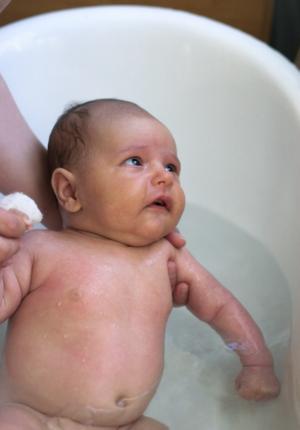
Babies don't need a bath every day, but you will need to keep their faces, hands, bottoms, and the creases in their necks, groin, and legs clean. It is not safe to clean inside the baby's ears or nose or to retract a baby boy's foreskin .
Here are a few bath time tips
Before you begin your baby's bath, be sure you have everything you need close at hand.
- a basin or tub - some parents use the kitchen sink
- mild unscented soap
- towels
- washcloths
- a soft baby hairbrush
- clean baby clothes and diaper
This is how to bathe your baby


